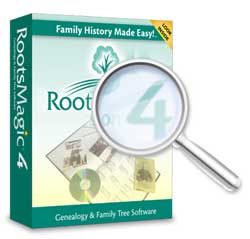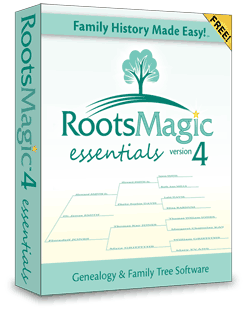NOTE: This is Part 11 of our ongoing series documenting the history of our company. If you’re just joining us, be sure to read Part 1, 2, 3, 4, 5, 6, 7, 8, 9, and 10.
As 2007 rolled around, we began talking about rewriting RootsMagic from scratch. We were still using the same old dBase file format we started using in Family Origins over 10 years earlier. Among other problems, it didn’t support Unicode (which meant it couldn’t handle special characters like Cyrillic and others), and each RootsMagic database contained over 30 different files, which users didn’t always keep together properly. We also wanted to add some new functionality which we couldn’t just squeeze into the existing code. Once the dust had settled, we had not only chosen a new database format, we also changed the programming language we were going to use.
As we began work on the rewrite, the first thing we realized was we weren’t just rewriting our own code, we were having to find replacement libraries for all the behind the scenes things as well. We had to find new libraries to handle spell checking, zipping files, image manipulation and a dozen other functions, and had to rewrite several other libraries ourselves. It was turning out to be a much bigger project than we originally planned for.
Adding to the work, we were approached by FamilySearch during this time about a new system they wanted us to support. They were calling it “New FamilySearch”, and it was in the early stages of development. It was good timing for us since we were redesigning everything anyways, but it was trickier from a marketing standpoint. Everybody wanted to see our new FamilySearch features, even though we hadn’t even released the new version yet. We began demonstrating the FamilySearch features at genealogy conferences, but keeping the main part of the program basically hidden. I still find it funny that we ended up winning two FamilySearch awards (“Easiest to Sync” and “Best Dashboard”) two weeks before we officially released the program.
Over the next year and a half we worked on RootsMagic 4 in secret. As time went by without us releasing a “new version” some customers began to worry that we had “abandoned” the program, even posting those thoughts on our forums and mail lists. We didn’t want our competitors to know we were doing a rewrite, so we slowly leaked info that version 4 was in the works. But it wasn’t until July 5, 2008 that we started spilling the beans. On that day we started a new blog, and began writing “insider” articles about the new features coming in RootsMagic 4.
http://blog.rootsmagic.com/?p=6
We knew we were still months away from being able to release the program, but we also knew we had tons of new features to write about. We started with the smallest new features, and worked up to the major new features. We blogged through the development, community preview, beta test, and release of the program. Little did we realize when we started the blog that it would be over 8 months of blogging before we actually released the new version.
Finally, on March 25, 2009, we officially released RootsMagic 4. It felt like such a relief to finally get it out the door. But the first 6 months were a rocky road, as bugs were getting reported faster than we could fix them. Apparently having 2000 users testing the program during our community preview, and even more during our public beta wasn’t enough to find all the bugs. Mike and I worked around the clock trying to fix bugs, but users were getting angry that we weren’t fixing them fast enough. There were more than a few times that Mike and I wondered aloud if it had been worth doing the rewrite.
We kept plugging away fixing bugs and things began to settle down. Sales were great, but we knew there had to be a way to reach even more people. I began to think about my old shareware days, and wondered whether something along those lines might work. Since the old Family Origins days we had provided a demo version of our software. The demo version had all the features, except that it would only hold 50 people. I had always hated that 50 person limitation, but figured that was how demos worked.
Mike and I talked about getting rid of the demo, and instead offering a free “lite” version of the program, one which had all the “essential” features necessary for a genealogy program. But our main criteria was that it use the same file format as the full program. We had a lot of customers who wanted to share their database with a family member, but didn’t want to have to buy another copy of the program to do that. We made a list of RootsMagic’s features, and then painstakingly went through each one to decide whether that feature was essential to tracking your family history. Some items on the list were easy… people, notes, sources, pictures, pedigree charts and family group sheets were all essential to a good family history. Some were not so easy… is it essential to be able to create wall charts of your family?
Finally, on November 18, 2009, we released (what else?) RootsMagic Essentials. While we were excited about this new direction, we were also nervous about whether offering a fully functional free version of our software would eat into our sales, or whether the added exposure would make up for it. We were so worried we even made sure we had the ability to switch back to the limited demo version if things got too bad. Luckily that wasn’t necessary, as RootsMagic Essentials became one of the best ideas we ever had.
Next: Growth and New Products


